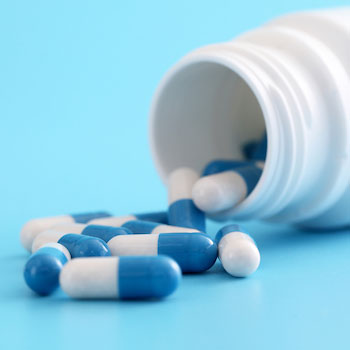Laxogenin is one of many plant-based steroids that help to promote growth in plants. It comes from the stems of Asian plants such as Smilax sieboldii, Allium schoenoprasum, Allium chinense, and Solanum unguiculatum, but only in very small amounts. As dietary supplements, laxogenin and its so-called derivative, 5-alpha-hydroxy-laxogenin, are promoted as “natural anabolics” (alternatives to anabolic steroids) for those who want to gain muscle mass while keeping body fat low. They appear on dietary supplement labels and websites with claims of increased lean muscle growth, strength, and vitality.
Laxogenin and 5-alpha-hydroxy-laxogenin have not been approved by FDA for any use, and 5-alpha-hydroxy-laxogenin is on the DoD Prohibited Dietary Supplement Ingredients list. The safety of products containing either ingredient is unknown.
Laxogenin was first identified in the 1960s as a member of a group of plant-based steroids known as brassinosteroids. 5-alpha-hydroxy-laxogenin is sometimes marketed as a “scientific name” or “derivative” of laxogenin, but no reports have demonstrated its natural occurrence. Instead, it is described as synthetic and derived from diosgenin, a plant-based raw material used in the pharmaceutical industry to prepare synthetic steroidal drugs.
What does the science say about these ingredients?
No studies have been done on the effects of laxogenin or 5-alpha-hydroxy-laxogenin in humans or animals, including whether these ingredients can produce any of the effects claimed for them as dietary supplement ingredients to gain any muscle mass.
Are they safe as dietary supplement ingredients?
Neither laxogenin nor 5-alpha-hydroxy-laxogenin has been tested in humans, so it is unclear if either is safe. The latest research testing some of these products shows that labels are usually not accurate. For example, laxogenin (as a plant extract) was not detected in any products tested. Products in which the synthetic substance 5-alpha-hydroxy-laxogenin was detected also contained other substances not disclosed on the label, including some drugs or other substances with unknown health effects. Some of those substances are ones prohibited for use by Service Members.
Why avoid their use?
Laxogenin is not prohibited for use by Service Members and should not cause a positive drug test. However, products with this ingredient on the label do not always contain laxogenin and might contain other ingredients prohibited for use. 5-alpha-hydroxy-laxogenin, however, is on the DoD Prohibited Dietary Supplement Ingredients list. FDA recently determined 5-alpha-hydroxy-laxogenin does not meet the definition of a dietary ingredient and should not be used in any dietary supplement, so Service Members should avoid products that contain this ingredient. Also, products listing either of these ingredients could contain other substances, including drugs, some of which could cause a positive drug test result.
How to watch out for these ingredients
Amounts of laxogenin or 5-alpha-hydroxy-laxogenin up to 100 mg per serving—much more than the amount you would reasonably consume from the plant stems—are given on many product labels. Others list one or the other as part of a proprietary blend, which doesn’t provide the amount of each individual ingredient, so you don’t know how much you might consume. Some common synonyms for 5-alpha-hydroxy-laxogenin to watch out for are:
- 5-alpha-hydroxy-laxogenin
- 5a-hydroxy-laxogenin
- 5-laxogenin
- (25R)-3beta,5alpha-dihydroxyspirostan-6-one
- 25-R-spirostan-5a-diol-6-one-3-one
- 25R spirostan-5a-diol-6-one-3-one decanoate
- 25R spirostan-5a-diol-6-one-3-one undecanoate
Some synonyms for laxogenin are:
- UNII-HT7W184YG4
- HT7W184YG4
- SCHEMBL4027062
- ZINC70691911
- (25r)-3beta-hydroxy-5alpha-spirostan-6-one
- Q27280083
Bottom line
No evidence exists to show that dietary supplements listing either laxogenin or 5-alpha-hydroxy-laxogenin are safe or effective, and 5-alpha-hydroxy-laxogenin is currently on the DoD Prohibited Dietary Supplement Ingredients list because it does not meet the definition of a dietary ingredient. It is unknown how products listing either ingredient might affect your readiness or cause you harm.
Updated 10 May 2022

